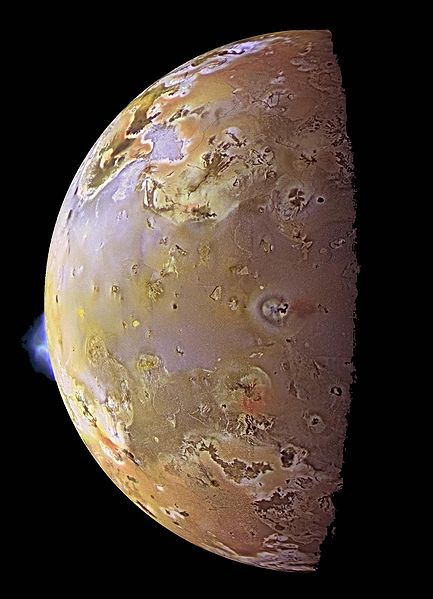Please note: The Academy will close at 3 pm on Thursday, April 18, for Big Bang Gala.
Science News
Supervolcanoes in Space
August 27, 2013
by Josh Roberts

Supervolcanoes here on Earth capture a lot of attention; from doomsday predictions to TV specials to planetarium shows, many folks seem concerned about these phenomena occurring at any moment from far beneath our feet.
But when searching for volcanoes, instead of down, maybe we should look up. We have found many unusual types of volcanoes in space.
A recent photo of Io, one of Jupiter’s moons, has just revealed a massive eruption on the surface of the large moon. The spread of the returning material covers about 30 square kilometers (11.5 square miles), making it one of the largest eruptions humans have ever witnessed and placing it within the top ten eruptions on Io.
Why is Io so active? The most likely explanation is the gravitational tug of war between the tidally locked moon and the massive planet Jupiter. This constant pulling and stretching is keeping the moon warm and fluid.
But why do explosions halfway across the Solar System away interest scientists? What we learn about these volcanic eruptions can help us understand volcanoes here on Earth a bit better and also give us a glimpse “under the hood” of Io.
And perhaps the coolest reason of all? Scientists studying the ice moon next to Io, Europa, have found magnesium salts on the surface of that moon that may have been spread there by Io throwing material into orbit around Jupiter! Some of that volcanic spray may be shared amongst the rest of the great moons of Jupiter as well. Evidence that these worlds have a diverse mix of chemicals is a big step toward determining the kind of primordial soup that could exist upon (or within) them, not to mention the kind of chemistry—or, perhaps, even evolution—that could be occurring there.
Josh Roberts is a program presenter and astronomer at the California Academy of Sciences. He also contributes content to Morrison Planetarium productions.
Image: NASA's Galileo spacecraft